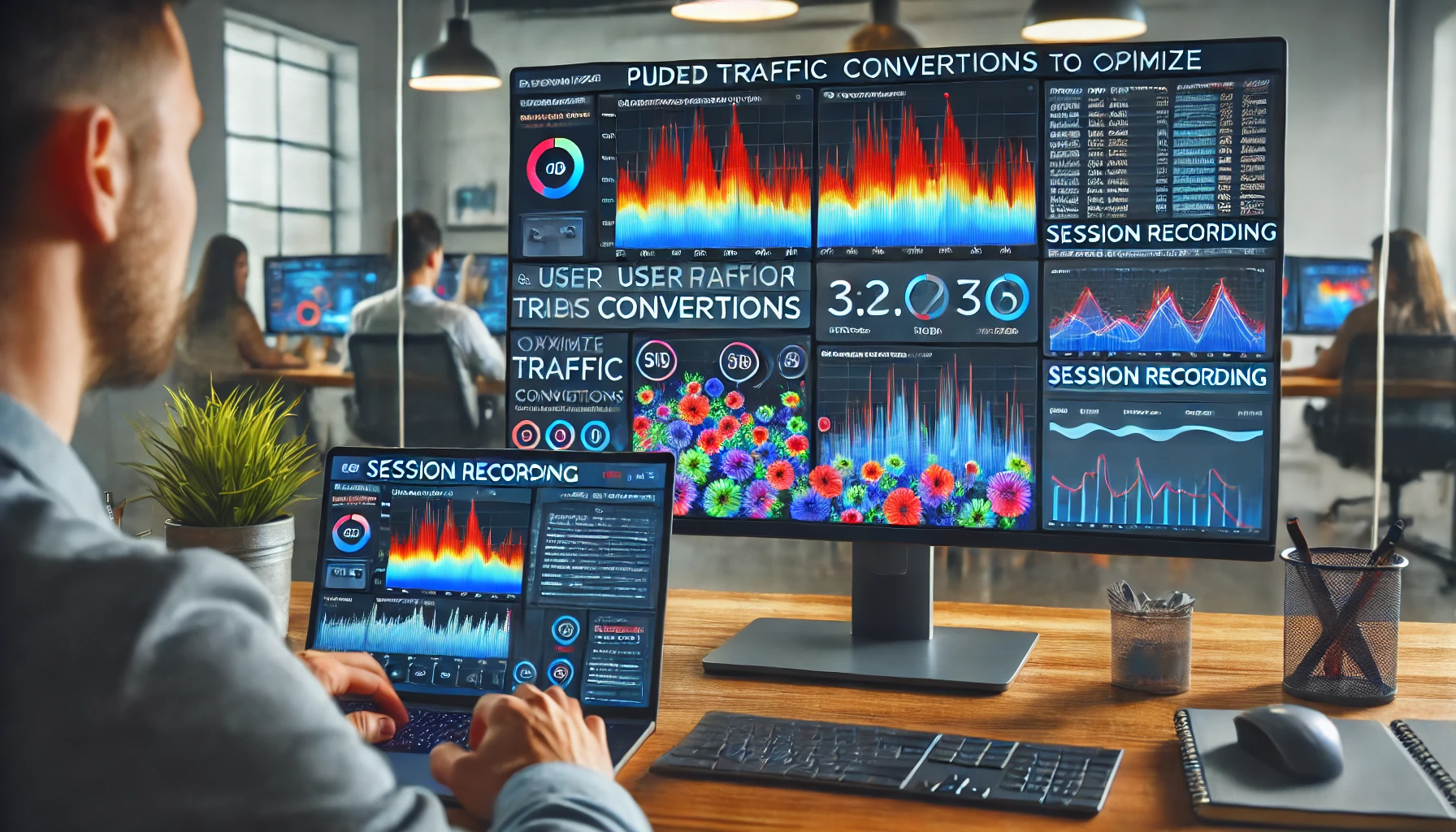📌 Introduction
Bringing traffic to your website is only half the battle—the real challenge is getting visitors to convert. Many businesses struggle with high bounce rates and low conversion rates, often without understanding why users don’t take action.
Heatmaps and user behavior analysis reveal how visitors interact with your site, helping you identify problems, improve UX (User Experience), and optimize landing pages for better conversions.
In this guide, you’ll learn how to use heatmaps and behavioral data to increase conversions and maximize ROI from your paid traffic campaigns.
🎯 Why Heatmaps and User Behavior Analysis Matter?
✔ Identifies Conversion Roadblocks – Finds areas where users drop off.
✔ Optimizes Landing Page Design – Improves CTA placement and user flow.
✔ Reduces Bounce Rates – Ensures visitors stay engaged and take action.
✔ Increases ROI on Paid Ads – Makes every click more valuable.
🔎 1. What Are Heatmaps & How Do They Work?
Heatmaps are visual representations of user behavior on your website. They track clicks, scroll depth, and mouse movements, showing which areas get the most engagement and where users lose interest.
✅ Types of Heatmaps & Their Uses
| Type of Heatmap | What It Tracks | Best Use Cases |
|---|---|---|
| Click Heatmap | Where users click the most. | Optimize CTA placement & navigation. |
| Scroll Heatmap | How far users scroll on a page. | Identify if key content is being seen. |
| Movement Heatmap | Tracks mouse movement patterns. | Understand user interest areas. |
Example: A landing page for an online course shows that only 30% of users scroll past the fold, meaning key information is too low on the page, reducing conversions.
🛠 Recommended Tools:
- Hotjar – Provides heatmaps & session recordings.
- Crazy Egg – Analyzes click behavior and scroll depth.
📊 2. Using Heatmaps to Optimize Landing Page Conversions
Once you generate heatmaps, the next step is using them to improve your landing pages.
✅ How to Use Heatmap Data to Improve Conversions:
✔ Move Important Content Above the Fold – Ensure users see CTAs quickly.
✔ Eliminate Distractions – Remove elements that don’t contribute to conversions.
✔ Optimize CTA Placement – Position CTAs in high-engagement areas.
Example: A real estate company sees low engagement on their “Schedule a Consultation” button. Moving it above the fold increases conversions by 18%.
🛠 Recommended Tools:
- Microsoft Clarity – Free tool for heatmaps & session recordings.
📢 3. Analyzing User Behavior with Session Recordings
Session recordings provide real-time playback of user interactions, showing where users hesitate, struggle, or drop off.
✅ How to Use Session Recordings for Optimization:
✔ Identify frustration points (users clicking repeatedly on non-clickable elements).
✔ Spot navigation issues (users getting lost or exiting without taking action).
✔ Improve mobile usability (ensure smooth experience on all devices).
Example: An e-commerce store sees that mobile users struggle to complete checkout due to a poorly placed “Buy Now” button, leading to a 12% drop in conversions.
🛠 Recommended Tools:
- Lucky Orange – Records user sessions & identifies friction points.
📉 4. Improving Paid Traffic Campaigns with Heatmap Insights
Heatmaps can directly improve paid traffic performance by optimizing landing pages for better conversion rates.
✅ How to Align Heatmap Data with Paid Traffic Optimization:
✔ Test Different Landing Page Variations – A/B test CTA placements based on heatmaps.
✔ Refine Ad Messaging – Ensure ad copy matches user expectations when they land on the page.
✔ Enhance Mobile Optimization – Fix UX issues causing mobile visitors to drop off.
Example: A B2B SaaS company finds that paid traffic from Google Ads bounces at 70%. A heatmap reveals users aren’t scrolling to the pricing section, so they move pricing details higher, reducing bounce rate by 22%.
🛠 Recommended Tools:
- VWO (Visual Website Optimizer) – Helps test heatmap-driven landing page changes.
📈 5. Measuring the Impact of Heatmap Optimization
After making adjustments based on heatmap data, track key metrics to measure success.
✅ Key Metrics to Track After Optimization:
| Metric | What It Measures? | Why It’s Important? |
|---|---|---|
| Bounce Rate | % of users leaving without interacting. | Lower bounce rate = better engagement. |
| Conversion Rate | % of users taking desired action. | Higher conversion rate = more sales/leads. |
| Time on Page | How long users stay on the page. | Longer engagement = better content effectiveness. |
Example: A financial services company uses heatmaps to redesign their lead generation form, reducing form abandonment by 28% and increasing leads.
🛠 Recommended Tools:
- Google Analytics 4 (GA4) – Tracks conversion rates before & after optimization.
🚀 Conclusion
Heatmaps and user behavior analysis provide valuable insights into how visitors interact with your site. By identifying where users drop off, optimizing landing page elements, and refining the mobile experience, businesses can increase conversions and maximize ROI from paid traffic.
🔥 Key Takeaways
✔ Use heatmaps to identify high-engagement & low-engagement areas.
✔ Adjust CTA placement, content positioning, and navigation based on heatmap data.
✔ Analyze session recordings to identify user frustrations and drop-off points.
✔ Improve landing pages for better ad-to-page experience & higher conversions.
✔ Track bounce rate, conversion rate, and time on page to measure improvements.
By applying these heatmap-driven strategies, you’ll turn more visitors into leads and customers while maximizing the effectiveness of your paid traffic campaigns! 🎯
